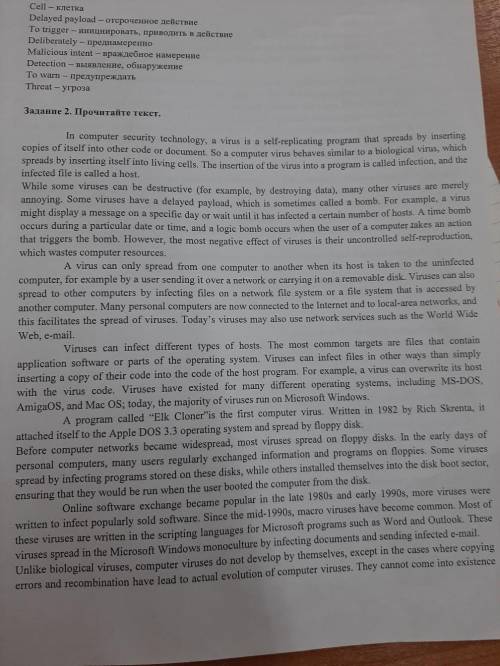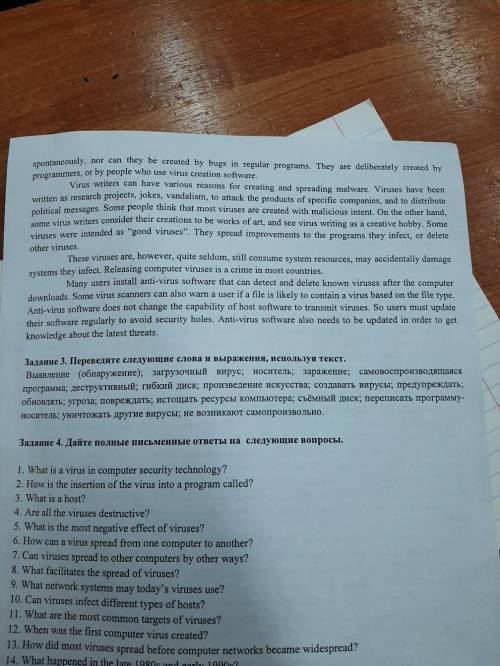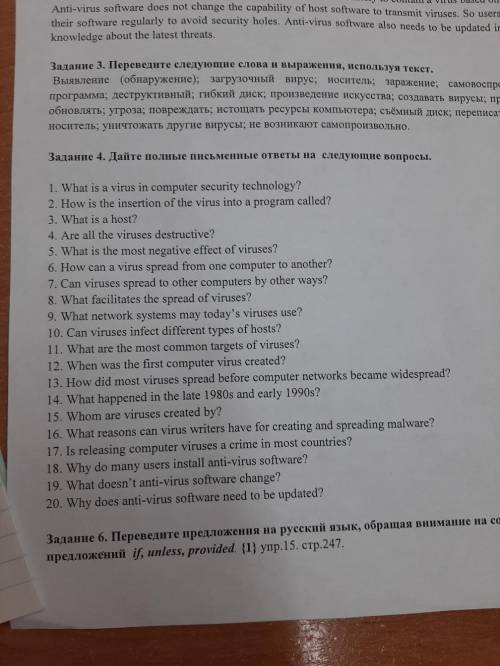


It's ten o'clock news and Mick Kemish (to speak)___is speaking
to you. The actress Vanessa Kemp (to disappear) disappeared
two days ago and she (not to see)_hadn’t been seensince. She (to
leave)__lefther home in the afternoon for the theatre. Two people
(to see)__sawher when she (to leave)___was leavingher home
but she (not to arrive)__didn’t arrive___at the theatre. At eight o'clock
the theatre manager (to break)__broke the news to the audience
and said that the performance (to take)__would be takenplace next
Tuesday. He said: «I believe she is not in danger. If she (not to appear)
__doesn’t appear___ tomorrow the police (to do) _will do whatever they can to find her. Since yesterday theatre staff and friends (to try)triedto find her. I hope it (to help)__will help__
the investigation.»
1. In computer security technology, a virus is a self-replicating program that spreads by inserting copies of itself into other code or document.
2. The insertion of the virus into a program is called infection.
3. A host is the infected file.
4. Some of the viruses are destructive, but many other viruses are merely annoying.
5. The most negative effect of viruses is their uncontrolled self-reproduction, which wasted computer resources.
6. A virus can spread from one computer to another when its host is taken to the uninfected computer.
7. Viruses can also spread to other computers by infecting files on a network file system or a file system that is accessed by another computer.
8. Many personal are now connected to the Internet and to local-area networks, which facilitates the spread of viruses.
9. Today’s viruses also use network services such as the World Wide Web and e-mail.
10. Yes, viruses can infect different types of hosts.
11. The most common targets of viruses are files that contain application software or parts of the operating system.
12. The first computer virus was created in 1982.
13. Before computer networks became widespread, most viruses spread on floppy disks. Some viruses spread by infecting programs stored on these disks, while others installed themselves into the disk boot sector.
14. Online software exchange became popular in the late 1980’s and the early 1990’s, more viruses were written to infect popularly sold software.
15. Viruses are deliberately created by programmers, or by people who use virus creation software.
16. Virus writers can have various reason for creating and spreading malware. Viruses have been written as research projects, jokes, vandalism, to attack the products of specific companies, and to distribute political messages.
17. Yes, releasing computer viruses is a crime in most countries.
18. Many users install anti-virus software to detect and delete known viruses after the computer downloads.
19. Anti-virus software doesn’t change the capability of host software to transmit viruses.
20. Anti-virus software needs to be updated in order to get knowledge about the latest threats.